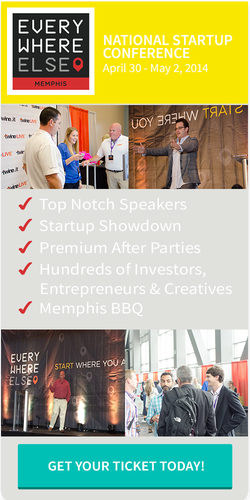 During our childhood years, measuring success was as simple as counting gold stars and smiley face stickers. In high school and college, we relied on report cards. But how do we determine success now, as entrepreneurs?
During our childhood years, measuring success was as simple as counting gold stars and smiley face stickers. In high school and college, we relied on report cards. But how do we determine success now, as entrepreneurs?
In Southern California’s bustling startup scene, known as “Silicon Beach,” many professionals leave the comfort of a steady paycheck to pursue the American dream of starting something they can call their own. And after numerous conversations with like-minded entrepreneurs, we found that many of these entrepreneurs measured their venture’s success not in dollars, but by their own satisfaction or happiness.
It’s no secret that money can’t buy happiness. In fact, according to an oft-cited study by Stanford University economist Angus Deaton and psychologist Daniel Kahneman, once you’re pulling in a salary of $75,000, any additional dollar earned does nothing more to increase personal life satisfaction.
So if happiness cannot be bought — and yet we use it to measure our business success — what can we do to attain it? Over the last decade, researchers in Positive Psychology have discovered a number of behaviors that boost happiness. To boost your own, practice these four behaviors:
1. Create a social circle of like-minded entrepreneurs.
Two heads are better than one when it comes to problem solving. A team of entrepreneurial peers can see what escapes our own attention, point out pitfalls ahead of time, and become a sounding board for critical decisions and actions.
Commit to creating a circle of like-minded entrepreneurs in which no money is exchanged between members.
2. Give your time away.
Many entrepreneurs think that devoting every waking moment to their company will ultimately be the key to success. But when you spend time helping others instead of yourself, your sense of time expands.
Professor Cassie Mogilner, a researcher on happiness and time management atthe Wharton School, explained this recently: “The results show that giving your time to others can make you feel more ‘time affluent’ and less time-constrained than wasting your time, spending it on yourself, or even getting a windfall of free time.”
Whether it be through mentorship, volunteering, showing interest, or lending an ear to a friend, giving time to others expands your sense of time and results in greater life satisfaction.
3. Set attainable goals.
The art of goal-setting can take years to master. As entrepreneurs, we all have big goals, and to experience success we have to learn to break large goals into smaller goals that are within our daily reach.
Try creating one goal per day that you want to accomplish outside of your day-to-day emails and meeting commitments — then do everything in your power to turn this into a lasting habit.
4. Practice gratitude.
There are a variety of ways to practice gratitude that entrepreneurs can easily incorporate into their daily routine. One approach is to set aside time every week to write thank you notes, sent via snail mail or over email.
If you thank a client, that’s expected. But if you thank someone for an unexpected task, research from Professor Sonja Lyubomirsky at the University of California suggests that your mind becomes more sensitive to positive interactions — and less sensitive to negative ones.
By practicing gratitude, you will begin to cultivate a chronic state of happiness.
Happiness is the new gold standard.
The traditional gold standard for measuring professional success is money, yet entrepreneurs almost always cite happiness as the highest-priority goal for attaining success.
Do you already practice any of these four happiness-promoting behaviors? If not, try integrating them into your daily practice today.
And guess what? Happiness can also lead to better health, more energy, productivity, and yes — more money.
Dmitriy Katsel is the founder of Spring Theory, an organization that matches corporations with universities in semester-long collaborations to explore solutions to big challenges. Sara Gershfeld, behavior analyst and founder of LoveMyProvider, also contributed to this article.
The Young Entrepreneur Council (YEC) is an invite-only organization comprised of the world’s most promising young entrepreneurs. In partnership with Citi, the YEC recently launched #StartupLab, a free virtual mentorship program that helps millions of entrepreneurs start and grow businesses via live video chats, an expert content library and email lessons.



















